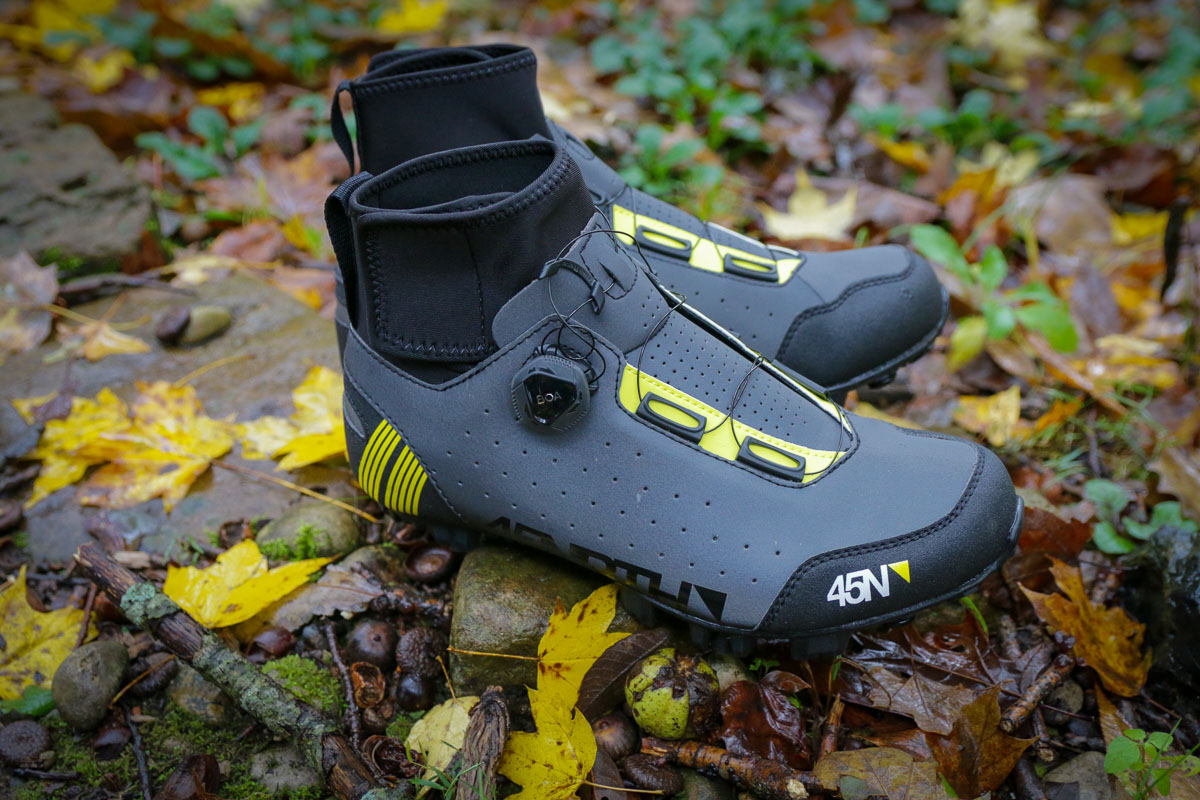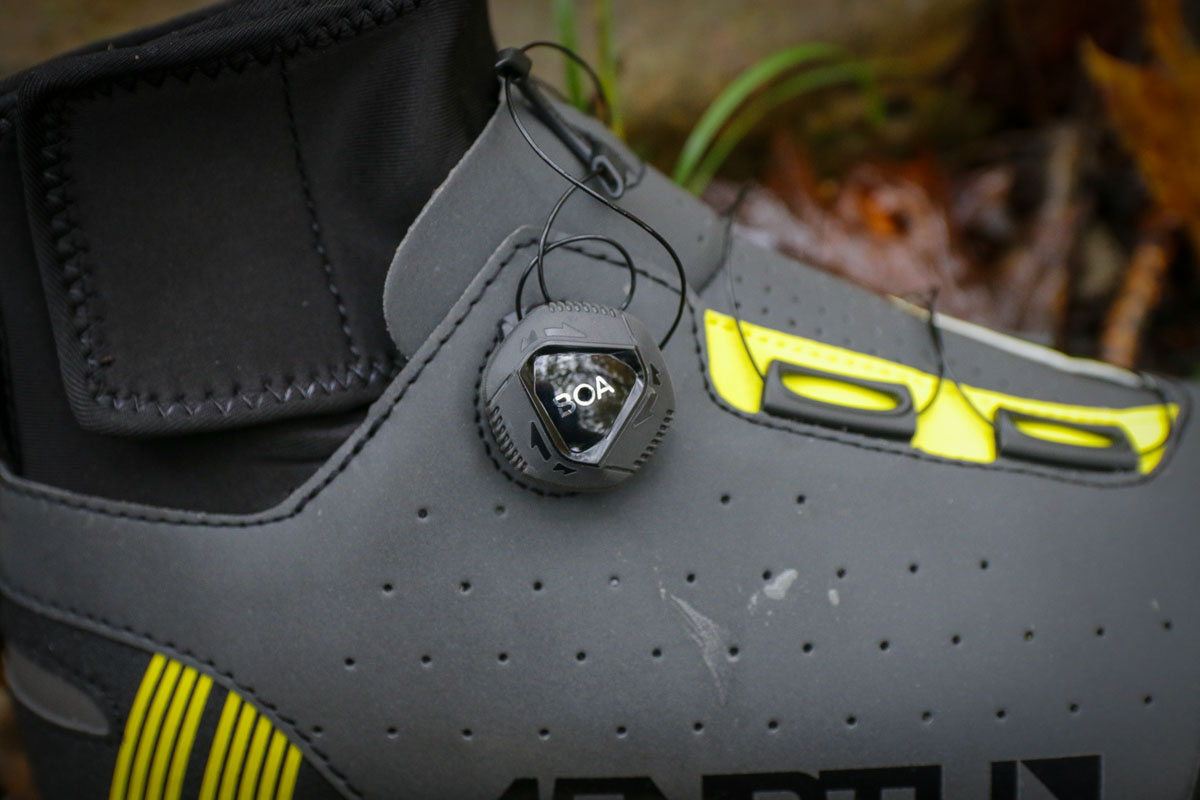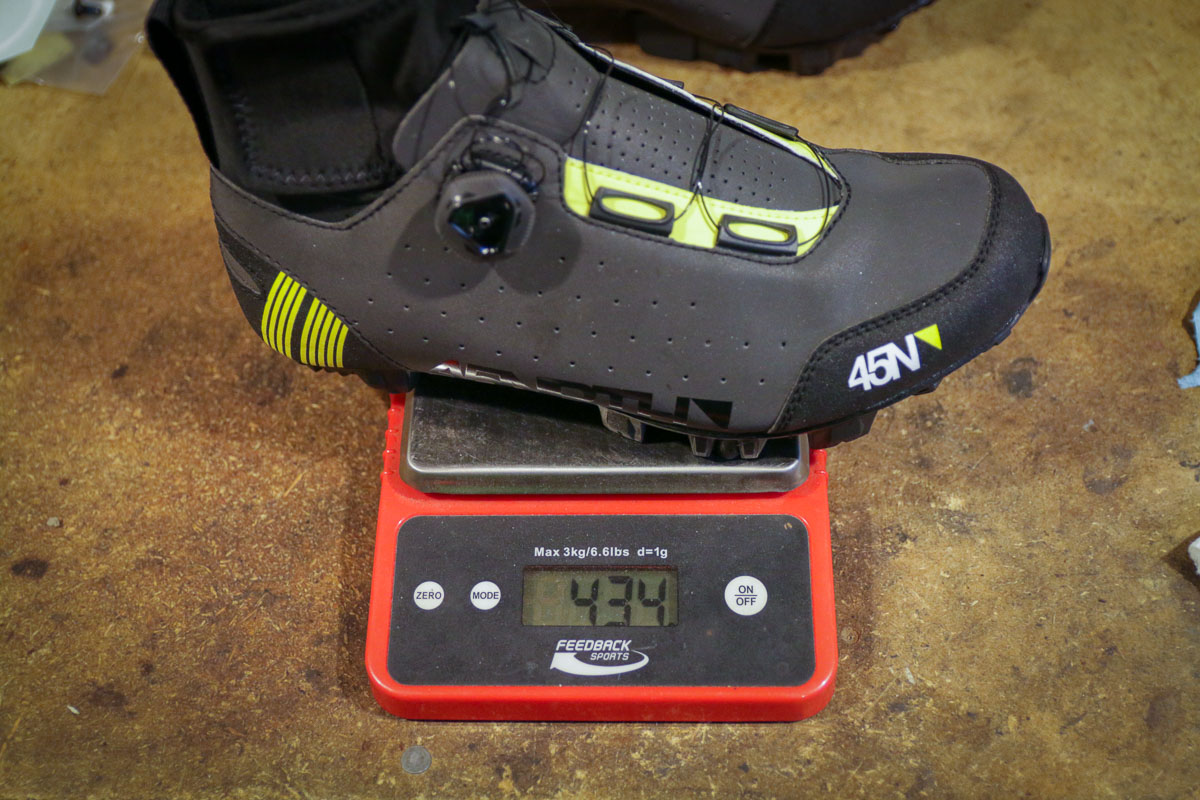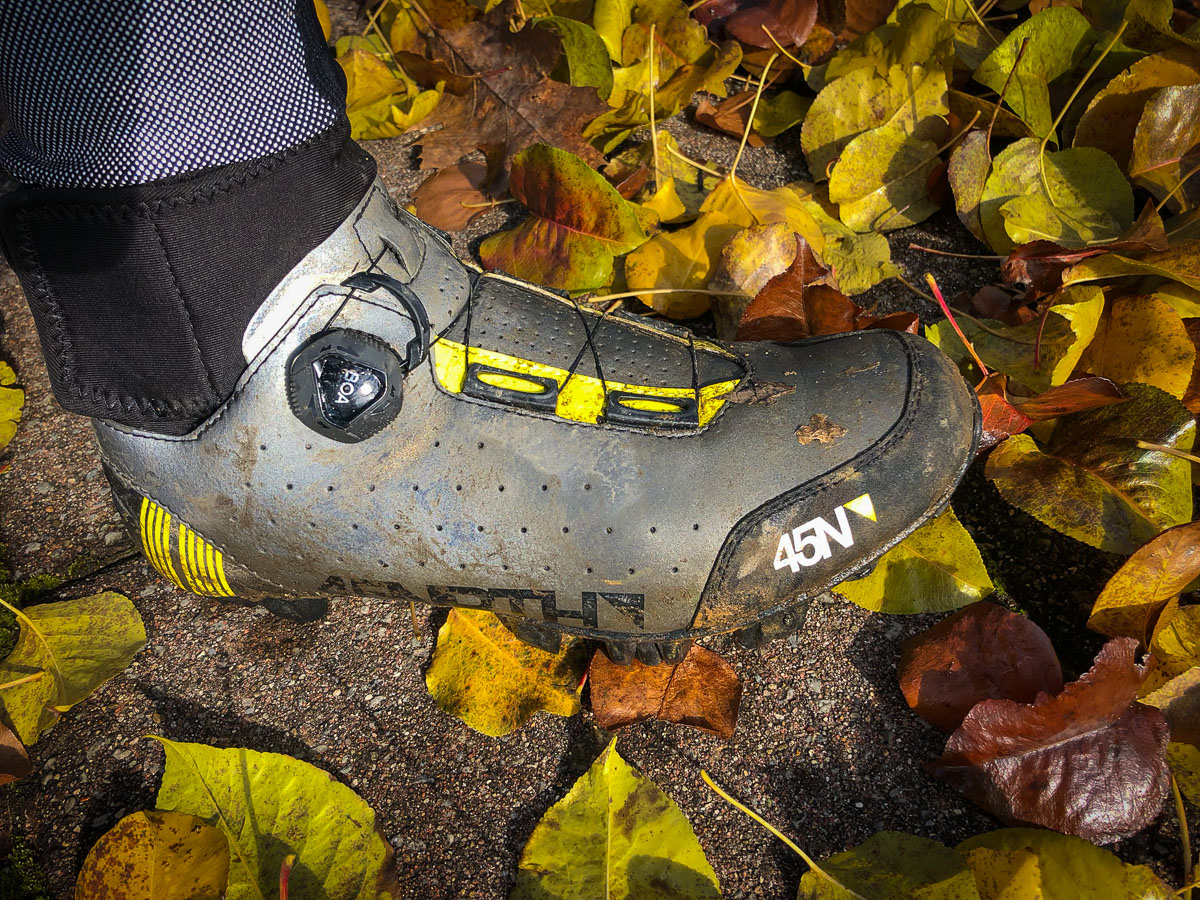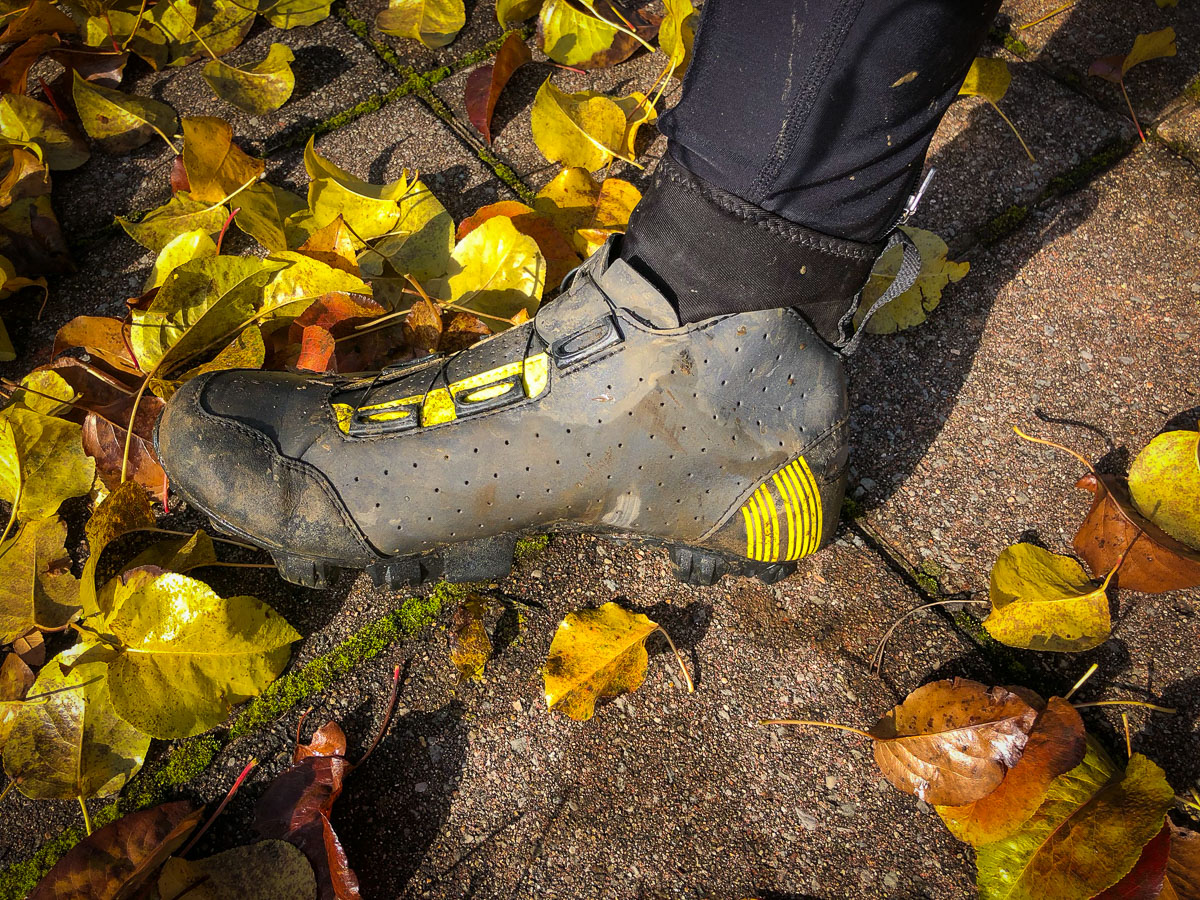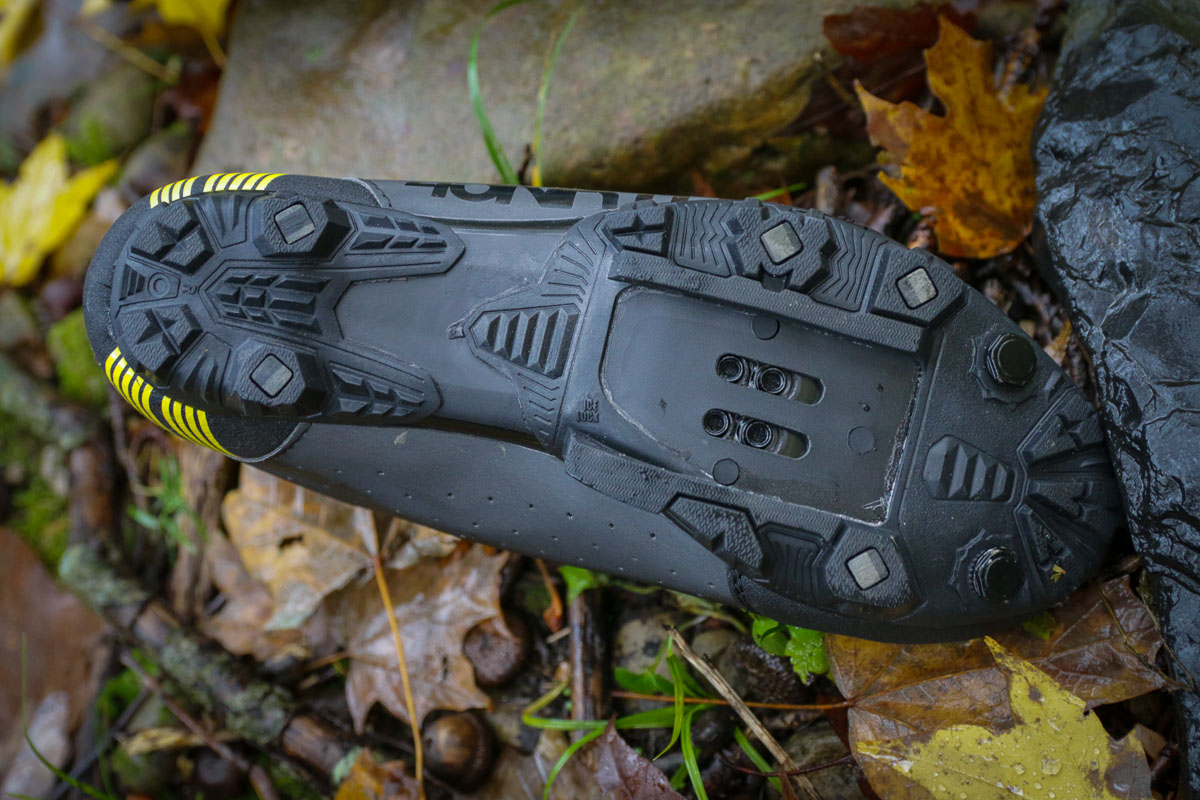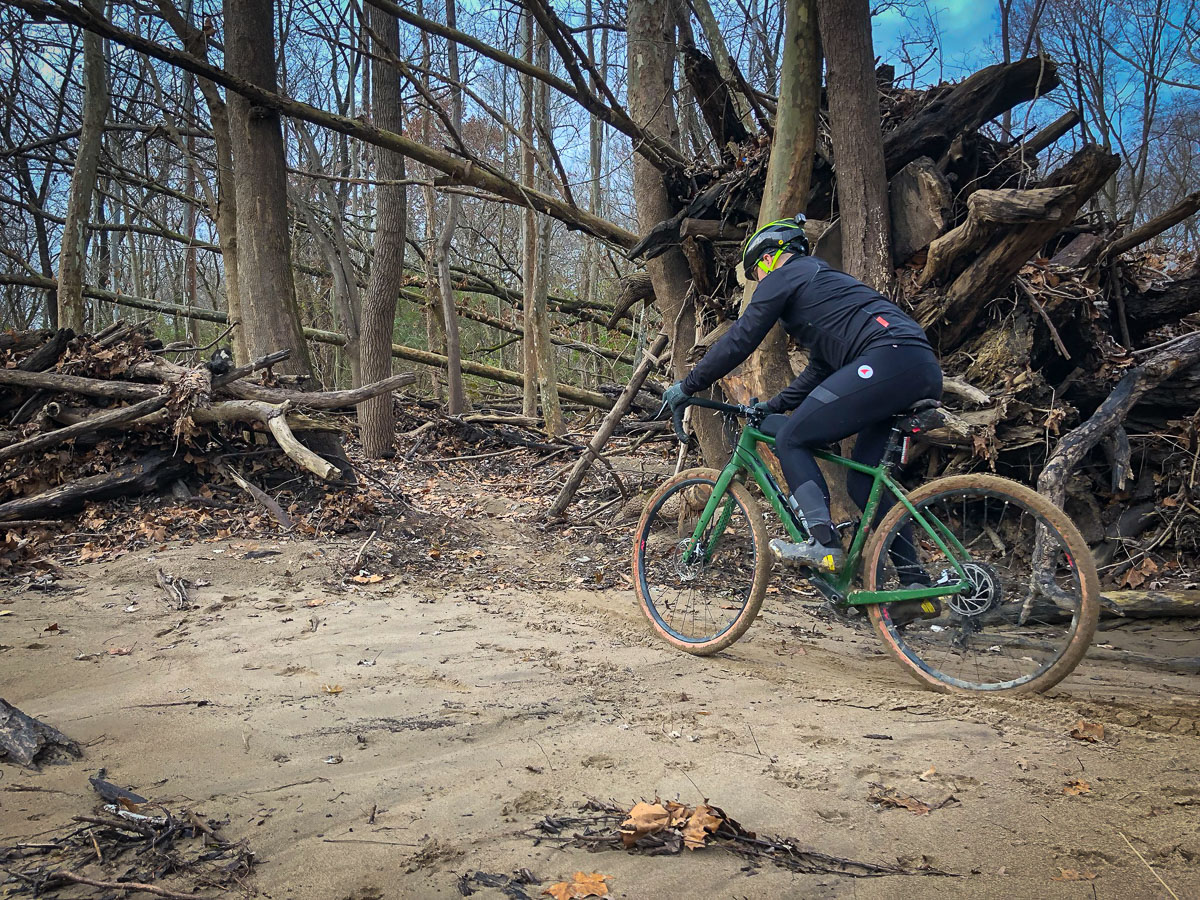As we head into winter and the weather starts to change, you’re probably reaching for different layers to keep you warm and dry. But What about your feet? Maybe it’s time for thicker socks or even shoe covers, but if you really want to keep your feet comfortable this time of year, you need some different boots.
The concept of a ‘shoulder season’ boot is nothing new, but that doesn’t mean there aren’t improvements that can be made. Shoulder season typically refers to the months at the tail end of Fall and the beginning of winter, or the end of winter and the beginning of Spring. Those months are usually wet and sloppy, but not cold enough to warrant a full-on winter boot. For 45NRTH, those temperatures start at 25ºF/-3ºC, though your mileage may vary.
Personally, after riding the Ragnarök boots down to 21ºF on a cold, wet night ride, I’d have to agree with 45NRTH’s recommendations. The boots are quite a bit warmer than your average summer shoe, but they’re not hotboxes for your feet. With that said, it wasn’t until the temperatures dipped below freezing that I ever felt the need to wear anything other than a summer weight sock. Once temperatures dropped into the 20’s, a mid-weight pair of wool socks was all that was needed to keep my feet toasty.
The fit of the Ragnaröks is pretty roomy, so if you run colder than most, you could probably get away with even thicker socks. Just remember that one of the easiest ways to make a boot feel cold is to wear too thick of socks in a boot that’s too small, which cuts off circulation to your toes.
Actually, one of the best parts of Ragnarök is the fit. Boots like this can be tricky. It’s difficult to find the right line between roomy for thicker socks, and not so loose that the heel slips while pedaling. To dial in the fit, the Ragnarök uses a two-pronged approach with a Boa IP1 reel, and a velcro neoprene cuff. The two work in tandem to keep your heel snug, and the resulting performance is incredible.
Personally, I’m usually running a 41.5 shoe for the summer, and since half sizes are not available in the Ragnarök I went with a 42. This turned out to be the right move as it gave just enough room for thicker socks.
Add in the fact that the boots are pretty light, and you have a shoe that provides great protection from the elements without feeling like you’re pedaling in a clunky moon boot. This is especially important for folks that have heel clearance or foot rub issues – if your normal shoes work well with your bike, these probably will too.
Speaking of weather protection, I got to find out just how waterproof the shoes were by accident after an unplanned foot-down in a creek. 45NRTH states that the shoes have a 3/4 waterproof membrane, but that the shoe isn’t totally waterproof if the water comes up high enough. You can see the watermark in the photos above, and my foot stayed completely dry.
On another ride in the pouring rain, my feet also stayed dry and warm inside without issue. No need for poorly fitting shoe covers that are a pain to put on and barely do their job anyways! The shoes might not be considered completely waterproof, but you have to really try to get the insides wet. Other than completely submerging your foot up past your ankles, you’re gonna stay dry.
While my Ragnaröks are often covered in mud, they seem to clean up pretty well with water – which is important if you want the reflective feature of the boots. On a night ride recently, a friend surprisingly stated that my shoes were reflective! Yes, yes they are, which is always a good thing if you’re out riding this time of year when daylight is limited. Though if you’re not a fan of the reflective grey look and only plan to ride offroad, there is an all-black version as well.
On the underside, a real rubber outsole with micro-glass filament lugs (five diamond shapes above) seems to provide decent grip in mucky conditions. The micro-glass lugs don’t seem to magically make those moss and algae-covered rocks sticky, but the sole seems sufficient overall. The ability to add toe spikes is a nice touch.
Really, my only criticism of Ragnarök comes from the performance of the Boa system. Over time as the boots have gotten dirtier, the single Boa dial seems to struggle to evenly tighten the lower part of the boot when you’re putting it on. To overcome this, you have to pull on the lace a bit to put tension on the system and gradually tighten it down. It seems that either the lace guides don’t handle dirt and grime all that well, or the shape of the boot would just benefit from dual Boa dials instead of a single.
However, I should say that I love the convenience the Boa system provides, and how easy the Ragnaröks are to get on and off (the sturdy pull loop on the back helps a lot). There’s nothing like struggling to get off your mud-covered boots when you’re cold, wet, and tired after a long ride.
Final Thoughts
When it comes to riding this time of year, it’s easy to find excuses. It’s too wet, too cold, too… whatever. Having a pair of shoes just for the time of the year between your summer and winter shoes is certainly a luxury, but if you ride a lot, it’s a luxury worth spending your money on. Especially if it gets you riding more.
At this point, I’ve ridden a lot of different boots in this category, and the Ragnaröks have easily been my favorites. The combination of fit, lightweight, and weatherproofing makes them an easy choice in a sea of options. The reflective boots are more pricey at $235, though the black version comes at $195.
